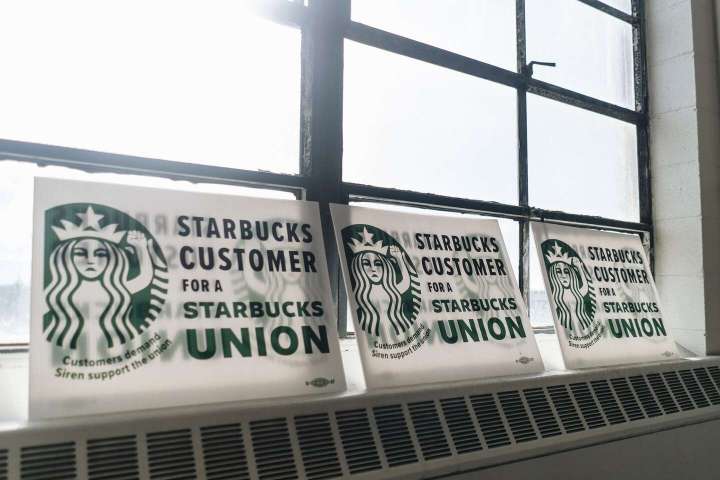Okay, it’s not like labor’s high tide in the 1940s or 1950s yet. But unions are staging a remarkable comeback in the United States that few anticipated even a decade ago.
Unions are on a roll. And they unite a divided nation.

After a long stretch during which Labor Day became the occasion for trade unionism’s obituaries, 2022 marks a resurgence in public appreciation for collective action, collective bargaining and the idea of solidarity.
Friends of labor might well react by saying: It’s about time. In truth, the new appreciation for what unions can achieve, and what workers have a right to expect, has been building over a long period.
All the public discussions of rising inequalities in income and wealth turn out to have been far more than academic or ideological exercises. Workers felt inequality personally — and are responding to it.
The long-term impact of the 2008-2009 economic meltdown, followed by the pandemic’s dislocations a decade later, tilted attitudes away from a celebration of pure market individualism and in favor of labor.
Follow E.J. Dionne Jr.‘s opinions
FollowGallup found that approval of unions hit low points of 48 percent in 2009 and 52 percent in 2010. They have risen ever since — to 61 percent in 2017, 68 percent last year and 71 percent last week, a peak not reached since 1965.
At a time when so many attitudes divide along racial lines, Gallup found that Whites and non-Whites were equally pro-labor. Approval spanned generations — at 72 percent for those under 54, and 70 percent among those 55 and over. Support for organized labor, close to unanimous among Democrats, is in fact bipartisan: 89 percent of Democrats approved of unions, as did 68 percent of independents and 56 percent of Republicans.
Opinion is translating into action. Vox’s Rani Molla documented how well-publicized union victories — at Amazon, Apple, Chipotle, REI, Starbucks and Trader Joe’s — are just the most visible part of a larger trend. (Jeff Bezos, the founder of Amazon, owns The Post.)
Unions won more representation elections in 2022 than they have in nearly 20 years, Molla reported. Their win rate has risen from barely over 50 percent in 2000 to 76.6 percent this year. And three times as many workers went on strike in 2022 as in 2021, she reported.
Another factor working in favor of unions, as The Post’s labor reporter Lauren Kaori Gurley noted, is a “red-hot labor market that has afforded workers more bargaining power.” Younger workers especially are unburdened by past labor failures and feel liberated by the availability of employment.
And “even a cooling-off economy,” Gurley wrote, “would not necessarily undo cultural shifts that have resulted in the rising popularity of unions, particularly among young, college-educated workers.”
All of this is happening against the backdrop of an administration trying to live up to President Biden’s pledge to be “the most pro-union president leading the most pro-union administration in American history.”
Jennifer Abruzzo, the general counsel at the National Labor Relations Board, has been pushing to overturn rulings and practices that hampered union organizing efforts in the past. And Katherine Tai, the U.S. trade representative, has been pushing what she told the United Steelworkers Constitutional Convention last month was an agenda “that is crafted with workers, for workers.”
“Our trade policy,” Tai told the union, “cannot be a vehicle for undercutting workers’ rights and outsourcing jobs,” adding: “delivering for workers is our main priority.”
A spurt of new organizing will not undo years of union decline. Efforts to change labor laws to make unionization easier have failed even in Congresses controlled by Democrats. The new shape of the economy — with fewer of the sorts of manufacturing jobs on which labor built its power between the 1930s and the 1960s — creates challenges that the movement still needs to master.
But the new labor story, based on an embrace of the promise of triumph through shared struggle, runs crosswise to many of the trends in our politics, and usefully so. Unions have the capacity to bring Americans together across some very deep divides. Republicans have yet to alter their largely antilabor policy stances to accommodate a new constituency that includes large numbers of working-class voters. You’d never know from the party’s hostility to unions how sympathetic the GOP rank and file is to what they do.
Labor Day is a celebration of workers and of their dignity. This makes it a good time to consider whether our country’s discontents have to be channeled through culture wars and racial prejudice. The surge in support for unions points down a different path, a practical quest to ease day-to-day burdens by improving wages, benefits and working conditions. That beats empty, angry and divisive demagoguery any day.






